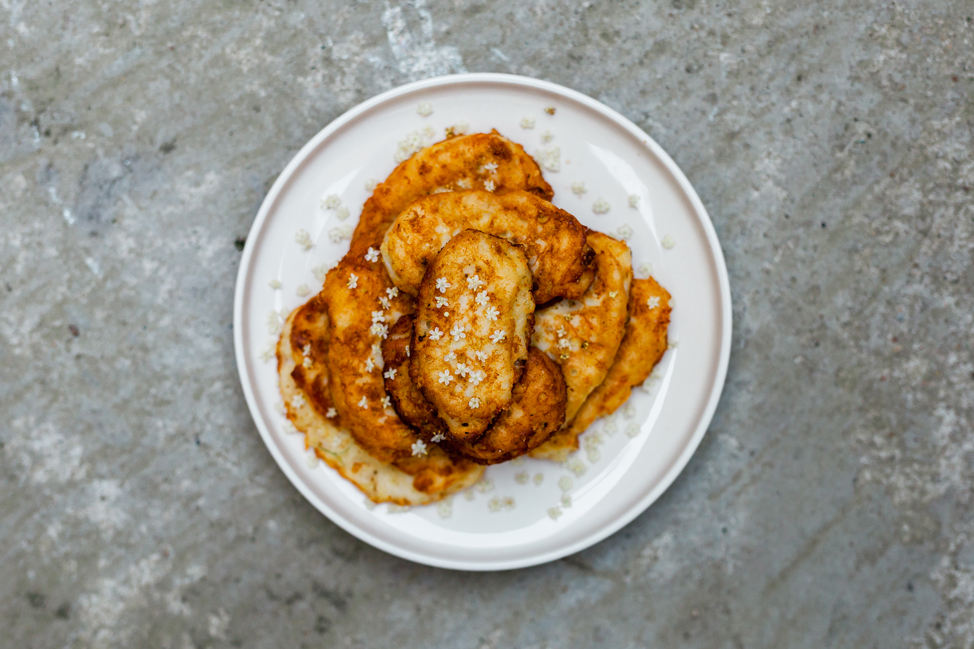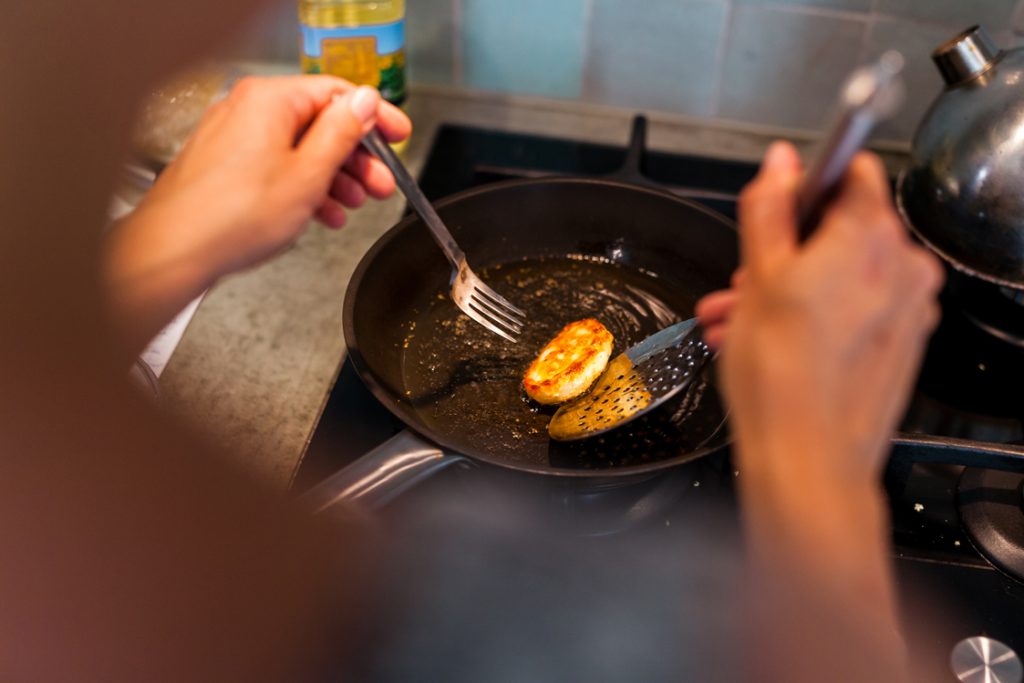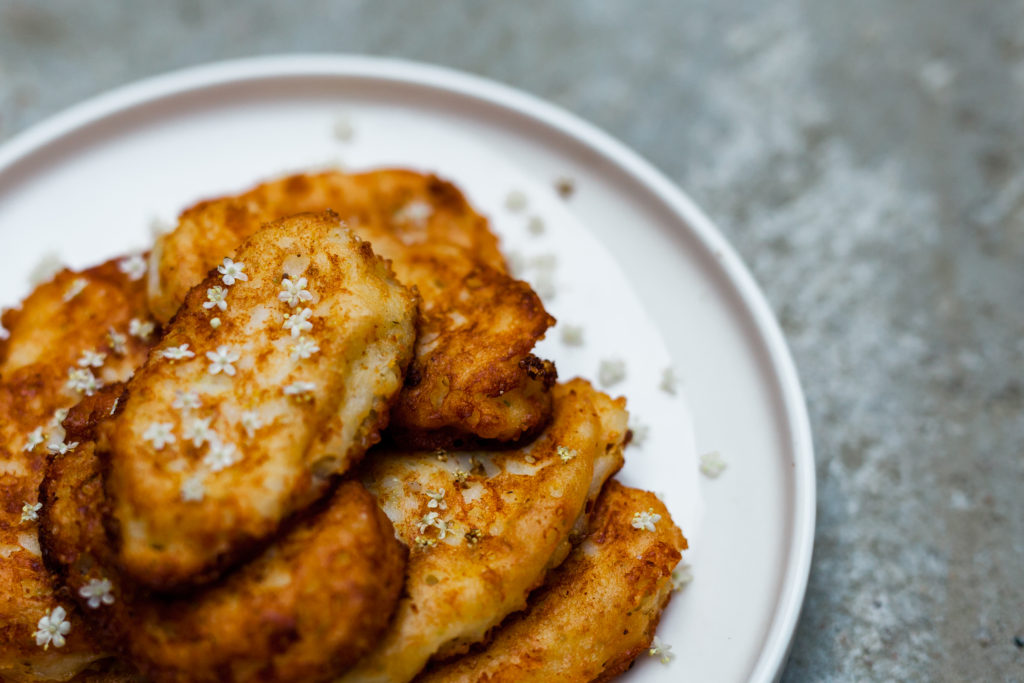Elderflower fritters
In early April 2017 we traveled around in Sicily. The island was bright green and golden yellow from the many flowers and herbs that were in bloom. To my surprise, we regularly found elderberry in bloom, the blossoms scented in the gentle wind. What a treat, because the elderberry flowers in the Netherlands in May. This way I could enjoy the aromatic scent and unique taste twice that year! I dug into historical Italian cookbooks in search of elderflower recipes.
The elderberry blossoms, berries and young shoots have been used in the kitchen for centuries. The oldest elder recipe comes from Italy. The recipe can be found in the Roman cookbook De re coquinaria (About the art of cooking) from the first century AD. It is an oven dish of elderberries mixed with eggs, wine, oil, pepper and garum, the famous Roman fish sauce. The elder was also used extensively in the Middle Ages. Herbal teas, fresh drinks, omelets, cakes and fried snacks were made from the blossoms.

Elderflower in the Italian Renaissance
In the Renaissance, elderflower appears to have been a favorite seasoning in Italy at the courts of popes and cardinals. I went through two cookbooks from that period for elderflower recipes: the Liber de arte coquinaria by Maestro Martino (ca. 1465) and the Opera dell’arte del cucinare by Bartolomeo Scappi (1570). My harvest was substantial. Martino treats us with four elderflower recipes: a cheese fritter, an almond and rose water fritter, a soup and a sweet cheesecake. Scappi gives no less than twelve: two omelets, two poached egg mixtures, two cheesecakes, a strawberry pie, two pizze and three fritters. How busy it must have been and how delicious it must have smelled in their noble kitchens during elderflower season.
Cheese fritters with elderflower from Maestro Martino
After some experiments with the different elderflower recipes, I serve you my favorite: cheese fritters with elderflower from Maestro Martino. The maestro is quite explicit in its recipe for elderflower fritters, which is unique in its time. Although the quantities are missing, the recipe can still be followed today. Read along with his description:
Take some good fresh cheese and a little aged cheese, and crush well, adding a bit of sifted flour to them and the necessary amount of egg whites; likewise, a little milk and some sugar; and grind all these things well together, remove from the mortar, and add a sufficient amount of elderflowers at your own discretion; they should not be crushed or crumbled, so as not to make the mixture too clear, that is, too liquid, so that you can form the round fritters using your hands, or in whatever shape you like, and then fry them in good rendered lard or butter, or in good oil; and serve very hot.*
*Translation by Jeremy Parzen.
Ingredients (for 15 small fritters)
1 egg white
100 grams of ricotta
100 grams of mature cheese or Parmesan cheese
50 grams of flour
50 ml of milk
2 tablespoons of sugar
1 cup of elderflowers* (no stems!)
* Can’t pick elderflowers? Replace the 2 tablespoons of sugar and the cup of elderflower with 4 tablespoons of elderflower syrup.

Preparation
Beat the egg white in a bowl until stiff. Grate the cheese. In another bowl, put the ricotta, cheese, flour, milk and sugar and mix vigorously. Lightly fold the egg white into the mixture until it is completely absorbed and the mixture has become visibly more airy. Finally, gently stir in the elderflowers.
Put a layer of about 2 centimeters of vegetable oil in a frying pan and heat. Take a tablespoon of the batter and let it slip into the oil. Bake them on both sides until golden brown and then drain them on kitchen paper. Eat them warm, sprinkled with a little salt.

